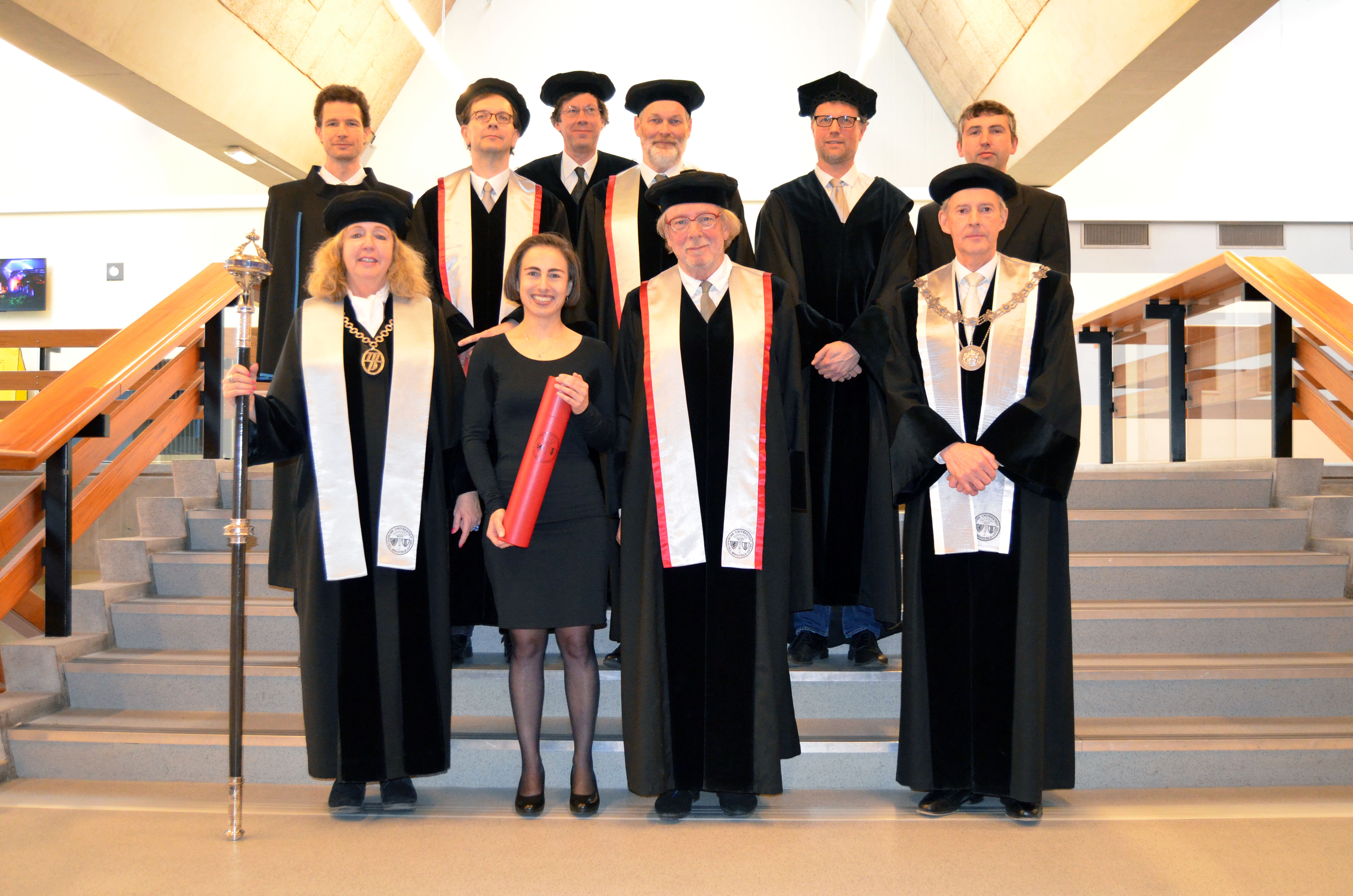Nanoscale Failure in Steel
 Multiphase alloys such as advanced high strength steels can show unexpected failure due to dislocations piling up at internal boundaries between the soft iron matrix and the hard precipitates. These might trigger interface decohesion followed by the formation of voids and cracks. To prevent such material failure, accurately predictive material models are needed. This month Astrid Elzas, PhD candidate at the Materials Science and Engineering Department, obtained her Doctorate cum laude for her thesis “Nanoscale Failure in Steel: Interface decohesion at iron/precipitate interfaces”. Astrid Elzas’ thesis is an important contribution to the field, especially because of the deeper and systematic understanding that is developed in the work. Astrid worked on the project within FOM-M2i (Materials Innovation Institute) Industrial Partnership Program ‘Physics of Failure’ in collaboration with Tata Steel and SKF.
Multiphase alloys such as advanced high strength steels can show unexpected failure due to dislocations piling up at internal boundaries between the soft iron matrix and the hard precipitates. These might trigger interface decohesion followed by the formation of voids and cracks. To prevent such material failure, accurately predictive material models are needed. This month Astrid Elzas, PhD candidate at the Materials Science and Engineering Department, obtained her Doctorate cum laude for her thesis “Nanoscale Failure in Steel: Interface decohesion at iron/precipitate interfaces”. Astrid Elzas’ thesis is an important contribution to the field, especially because of the deeper and systematic understanding that is developed in the work. Astrid worked on the project within FOM-M2i (Materials Innovation Institute) Industrial Partnership Program ‘Physics of Failure’ in collaboration with Tata Steel and SKF.
In Elzas’ thesis crack nucleation and interface decohesion are systematically studied on the nanoscale with large-scale molecular dynamics simulations, to understand which conditions lead to interface decohesion. It is found that the interface structure, which changes during response to loading, is the key factor. Elzas’ approach is unusual, since it allowed her to clearly observe the important physical effects in a controlled manner rather than having to tease them out of studies where many physical parameters change together. This is a much more scientific rather than a pure engineering approach. Elzas’ material/interface-specific force-displacement relationships are directly applicable to mm-scale continuum and mesoscale discrete dislocation dynamics. Another unique part is the consideration of mixed loading, i.e. a tensile force under an angle with the interface. This is very important, but few have attempted such studies because of their complexity.
Read ‘PhD defense Astrid Elzas: cum laude!’

